EcoCAR Mobility Challenge
Background
In August of 2018, I entered into the role of project manager for the University of Alabama’s EcoCAR Mobility Challenge team. The Challenge is a 4-year engineering design competition sponsored by The Department of Energy, General Motors, and MathWorks, and it’s the twelfth competition in the Advanced Vehicle Technology Competition series. The goal of the competition is to “challenge 12 university teams to apply advanced propulsion systems, as well as connected and automated vehicle technology to improve the energy efficiency, safety and consumer appeal of the 2019 Chevrolet Blazer – specifically for the car-sharing market.” This competition offers the involved students the ability to gain industry-level experience, while they are still in academia.
I served as the team’s project manager during during Year 1 and 2 of the competition. During Year 1 (2018 – 2019), all teams spend their time designing and selecting a new powertrain for their vehicle. At the conclusion of Year 1, these decisions are defended through a series of presentations that team members deliver to industry experts. If the team’s powertrain selection is approved by the industry experts and the competition’s organizational committee, the team can begin to integrate the new powertrain during Year 2 (2019-2020). In short, the teams design in Year 1, integrate in Year 2, and refine in Year 3 and 4.
Technical Details
Our team chose to integrate a P4 through-the-road architecture into our vehicle. This means a new engine and transmission will control the front wheels of the vehicle, and an electric motor will control the rear wheels of the vehicle. Additionally, we chose to utilize 4 Bosch multimodal radars and 1 Mobileye vision system to integrate L2 automation into the Blazer.
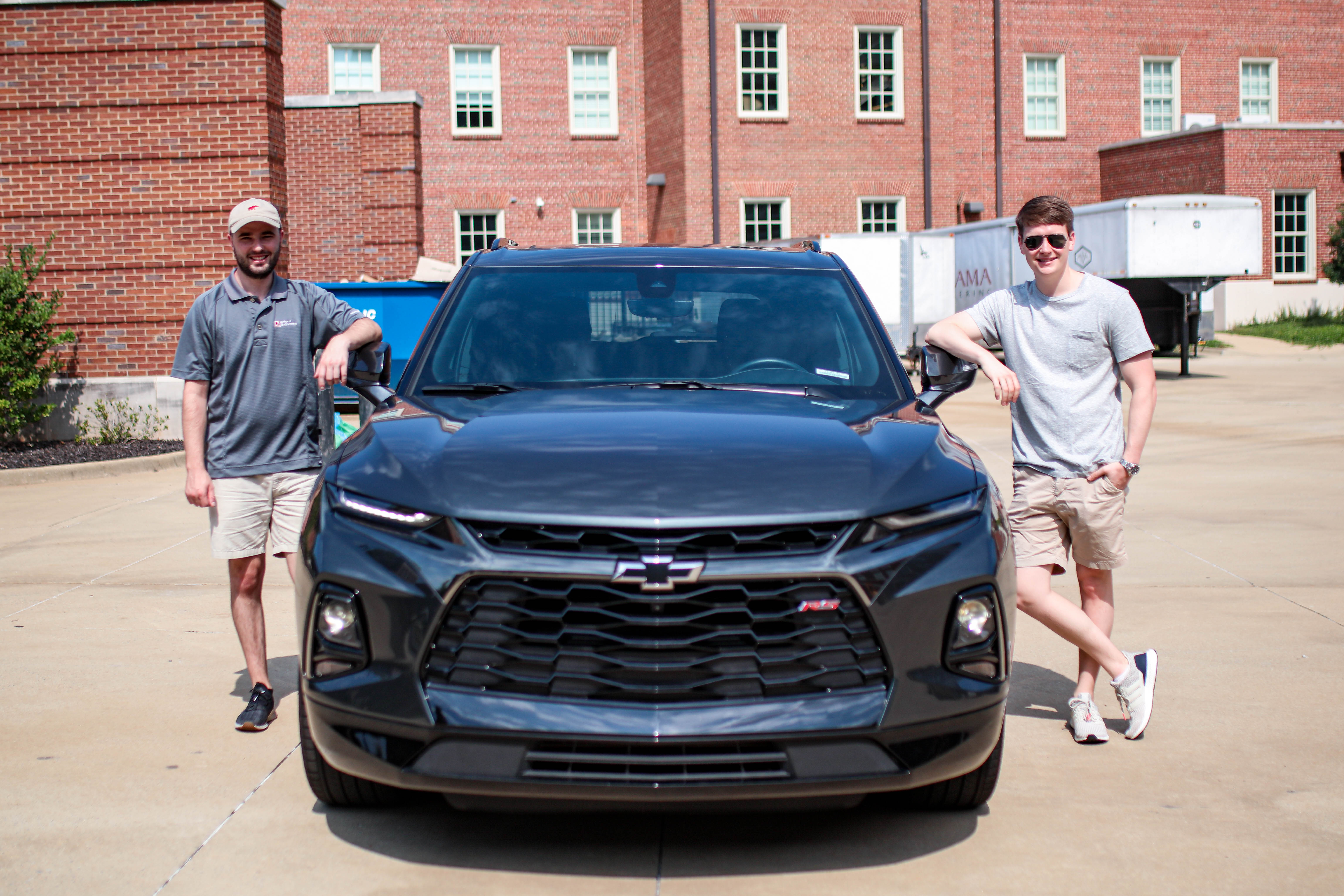
My Time as Project Manager
Before becoming the project manager, I didn’t have experience in the EcoCAR program, as much of my time had been spent working in the University of Alabama’s Aerospace Engineering Department. However, I was able to quickly learn from the team members who had previous experience in the team. Because of these veteran members, my automotive and autonomous systems knowledge base grew quickly. I was fortunate to have been a part of such an experienced team, and our success in the current competition has equipped the program for future successes.
As the project manager, I managed the goals and milestones for all team members and sub-teams shown in the organizational chart below.
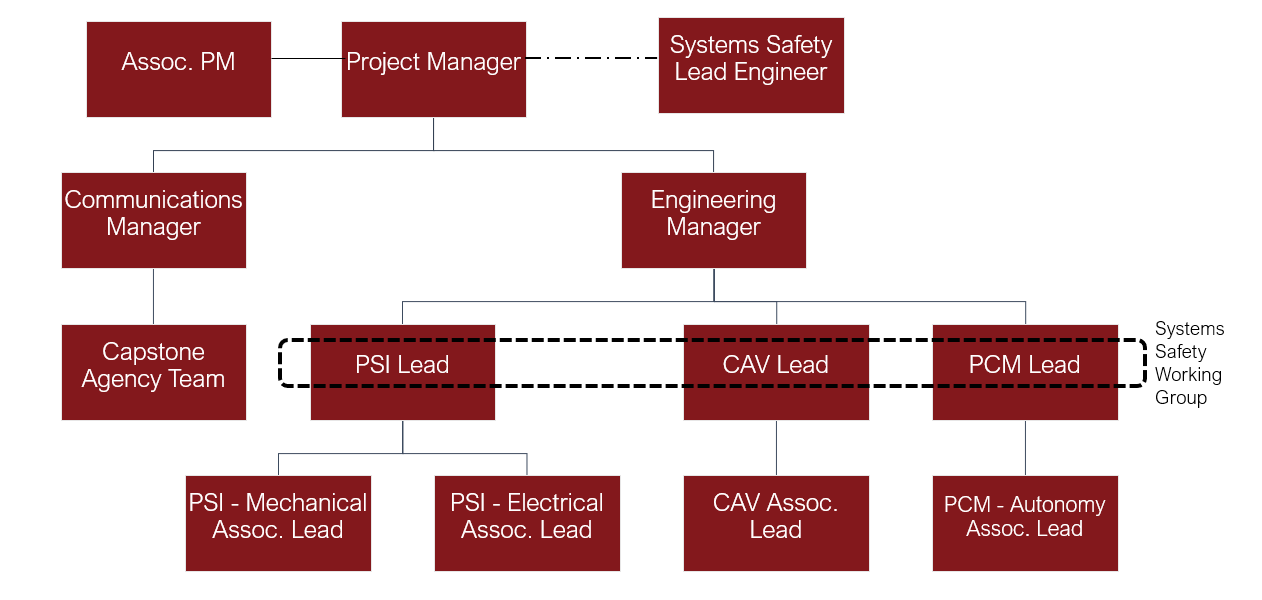
Additionally, I had four main areas of focus.
- Timeline management
- Stakeholder management
- Financial management
- Personnel management
- Timeline Management
In the beginning of Year 1, I set our vehicle’s technical specifications by conducting thorough research into the car-sharing market and by utilizing subject matter expert feedback. Based on these specifications, our team simulated dozens of possible vehicle architectures and chose the one best suited to meet these specifications. Throughout this process, I consistently created and modified the vehicle development timeline. As the team transitioned into Year 2 of the competition, my team and I enacted an Agile style of project management and tracking though the use of epics, stories, and tasks. To track these items, we use Trello – a web-based project tracking tool.
Stakeholder Management
As the project manager, I was responsible for ensuring that all involved parties were always aware of the team’s current project status and possible risks. To do this, I consistently managing the team’s conversations with General Motors, Argonne National Laboratories, university administration, and our faculty advisor team. I also led a faculty meeting held once a week.
Financial Management
I managed the team’s budget of over $200,000, and I created infrastructure necessary for upcoming project managers to quickly take ownership of the budget and purchases. While I did not directly purchase items for the team, I validated all purchases and sent the purchase requests to the College of Engineering’s purchasing department. Once the requests were made, I updated the purchase in our financial tracking software.
Personnel Management
While our team was managed by 6 graduate students, we had 70-140 undergraduate students on our roster at any point in time. The overarching goal of the EcoCAR program is to develop the next generation of engineers and business leaders, and because of this goal, our team allowed every level of undergraduate students to join the team. Historically, 90% of our undergraduates join the team at the beginning of the academic year, often without any automotive or autonomous systems knowledge. To quickly bring these students up to speed, I was responsible for managing the learning process in which these students participate in during August and September. To educate the new members, we held a series of meetings and workshops that helped the students understand the premise of the program, the architecture of our vehicle, and the functionality of all of our tools and software. Additionally, I ensured that all students submitted the required non-disclosure agreements to me, which I then submitted to Argonne National Laboratories.
Year 1 in Review
The goal of Year 1 in the competition is for all teams to evaluate the hybrid-electric and autonomy architectures they will re-engineer and integrate into a stock Chevrolet Blazer. Throughout the year, the teams develop vehicle specifications, simulate various architectures, and submit written reports regarding their vehicle development process. At the end of Year 1, all teams met in Atlanta, Georgia to present their final decisions through the delivery of six presentations.
During the Year 1 Competition, I was tasked with presenting details about the architecture selection process through the lens of project management to industry-leading engineers and managers. My goal was to cover any consideration that could potentially affect the time, scope, or budget of the project once our team begins to execute our selected architecture. I took the judges through a deep dive on risk analysis and the strategic decision-making process my team and I applied to the architecture selection process, including the methods, tools, and processes used, the specific risks identified, and how those risks impacted our decision-making process.
Developing this presentation took over 50 hours, but with the help of my team members and faculty advisors, I was able to deliver the presentation and win first place in the presentation. Moreover, I won first place in project management overall. It was a huge honor, especially as a newcomer to the program.
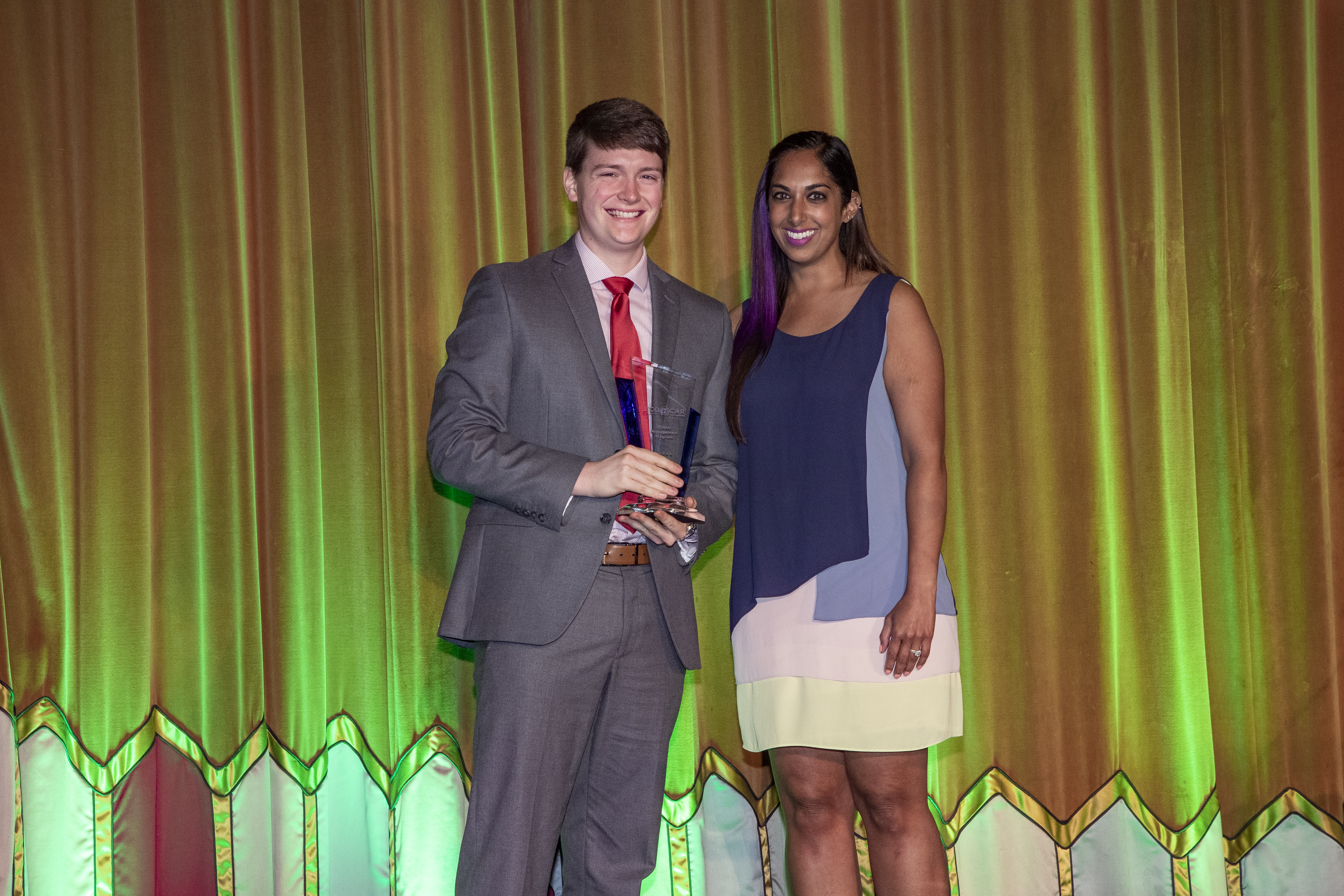
In addition the presentation I delivered, all other sub-teams (propulsion, controls, and autonomy) delivered presentations. Many of these presentations received top-five finishes. Once the points from these presentations and the reports that we submitted during Year 1 were evaluated, our team was awarded third place overall. This was a monumental accomplishment for our team, and we set our sights on rising higher through the ranks, as the years continue.
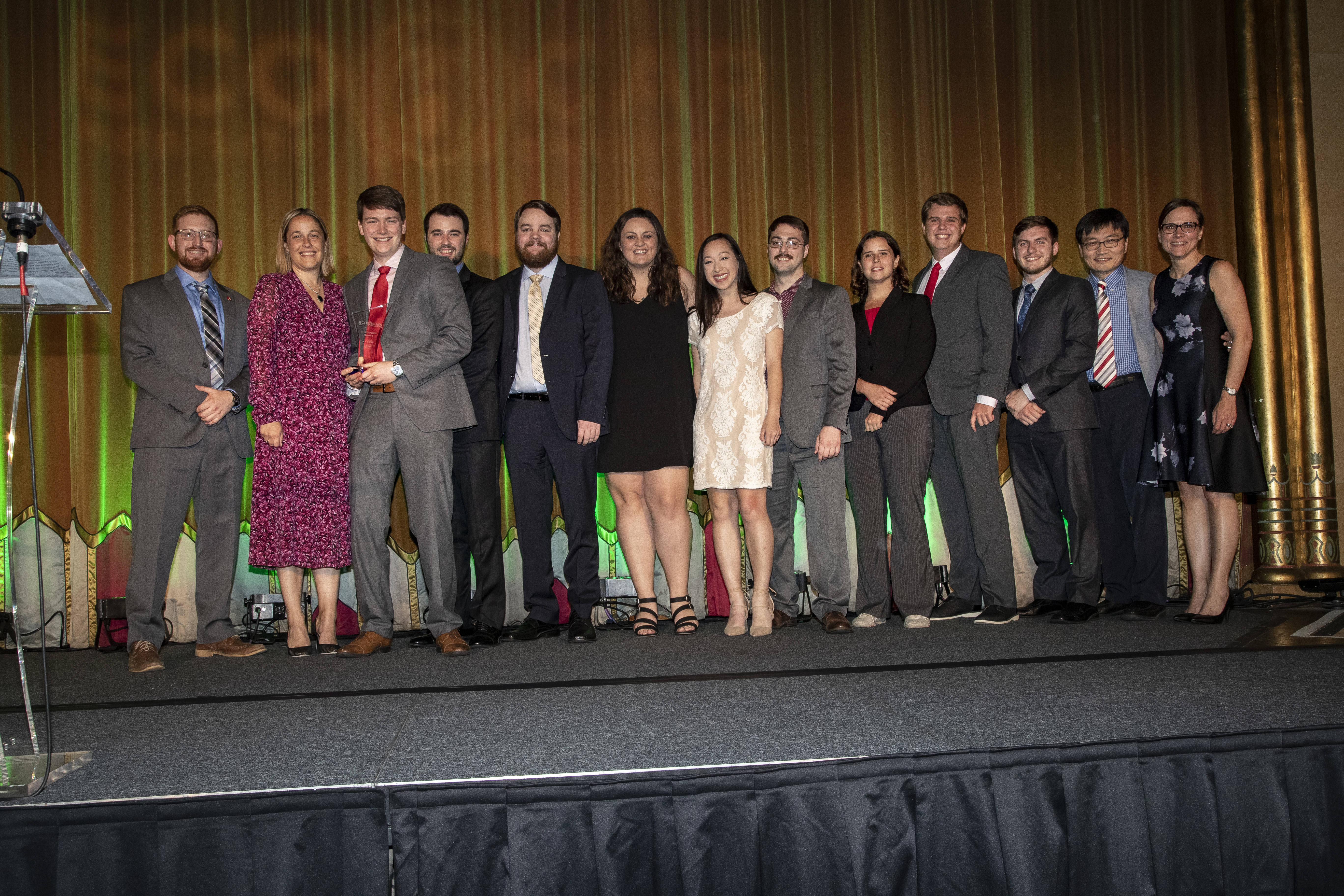
Year 2 in Review
While the goal of Year 1 was to design the vehicle, the goal of Year 2 was to build it. At the end of the summer in 2019, we received our Blazer. Immediately, we began to conduct baseline testing of the vehicle, and we finished those tests in mid-October. We then tore the vehicle down to its frame by removing the engine, transmission, interior, etc.
Once the the vehicle tear down process was completed, we spent the following months integrating the architecture we designed during Year 1. This included integrating a new engine, transmission, electric motor, high-voltage battery pack, and much more.
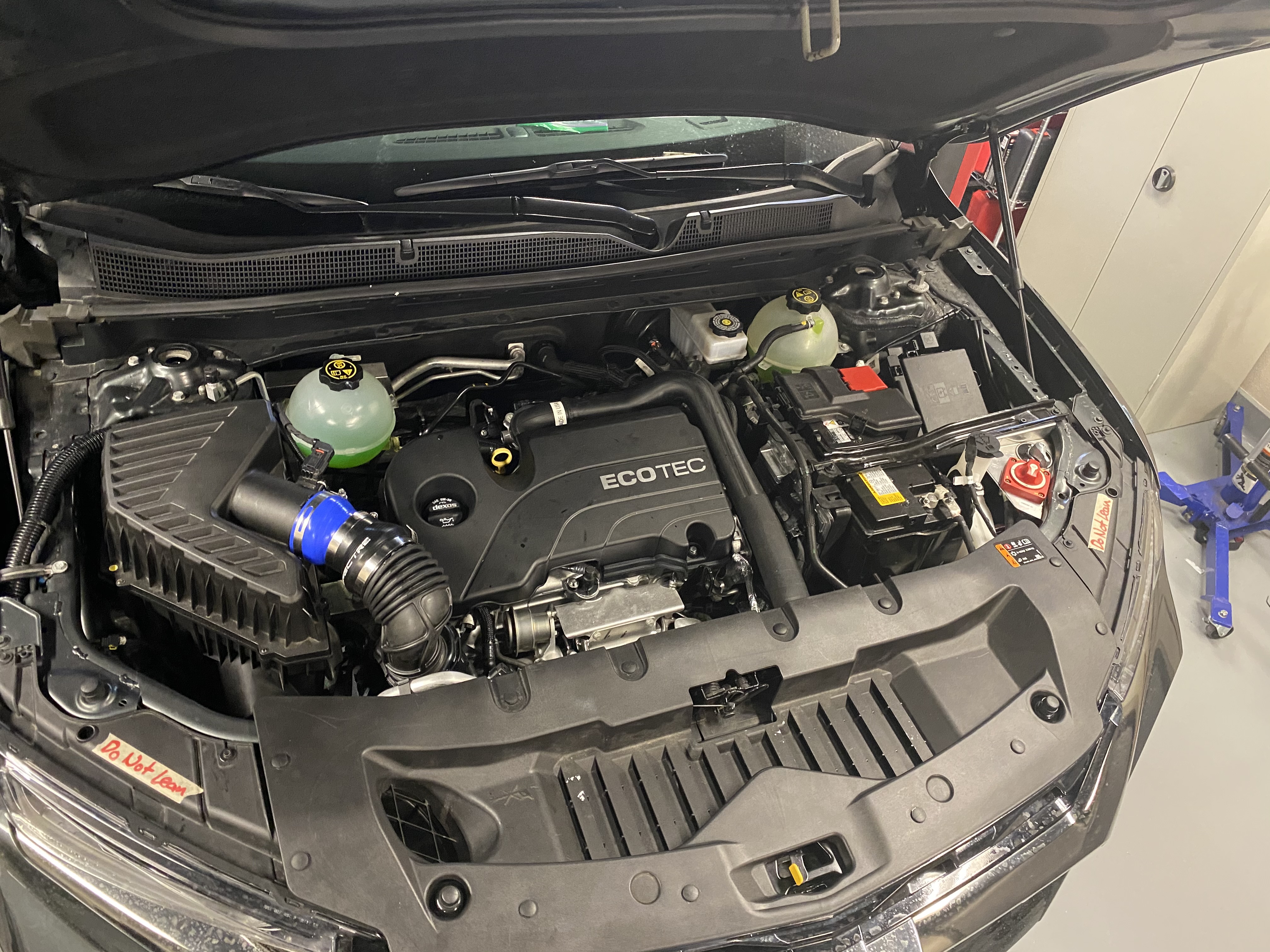
Unfortunately, like most campuses across the globe, our university operations were shut down in March 2020, and our team had to end its physical activities for the remainder of the semester. This definitely was discouraging to our team, as we had almost finished the full integration of the new powertrain, but we continued to push forward with virtual projects. This included conducting simulations of the vehicle’s autonomous functionality and writing closing reports as required by the competition.
In July 2020, the Year 2 awards ceremony was held virtually. During the ceremony, UA was recognized for two runner-up awards: Best Impact Report and Best Winter Workshop Project Status Presentation. The upcoming project manager for Year 3 and I were primarily responsible for these reports, so we were extremely happy to receive the awards. Additionally, I was recognized for the Excellence in Leadership Award.
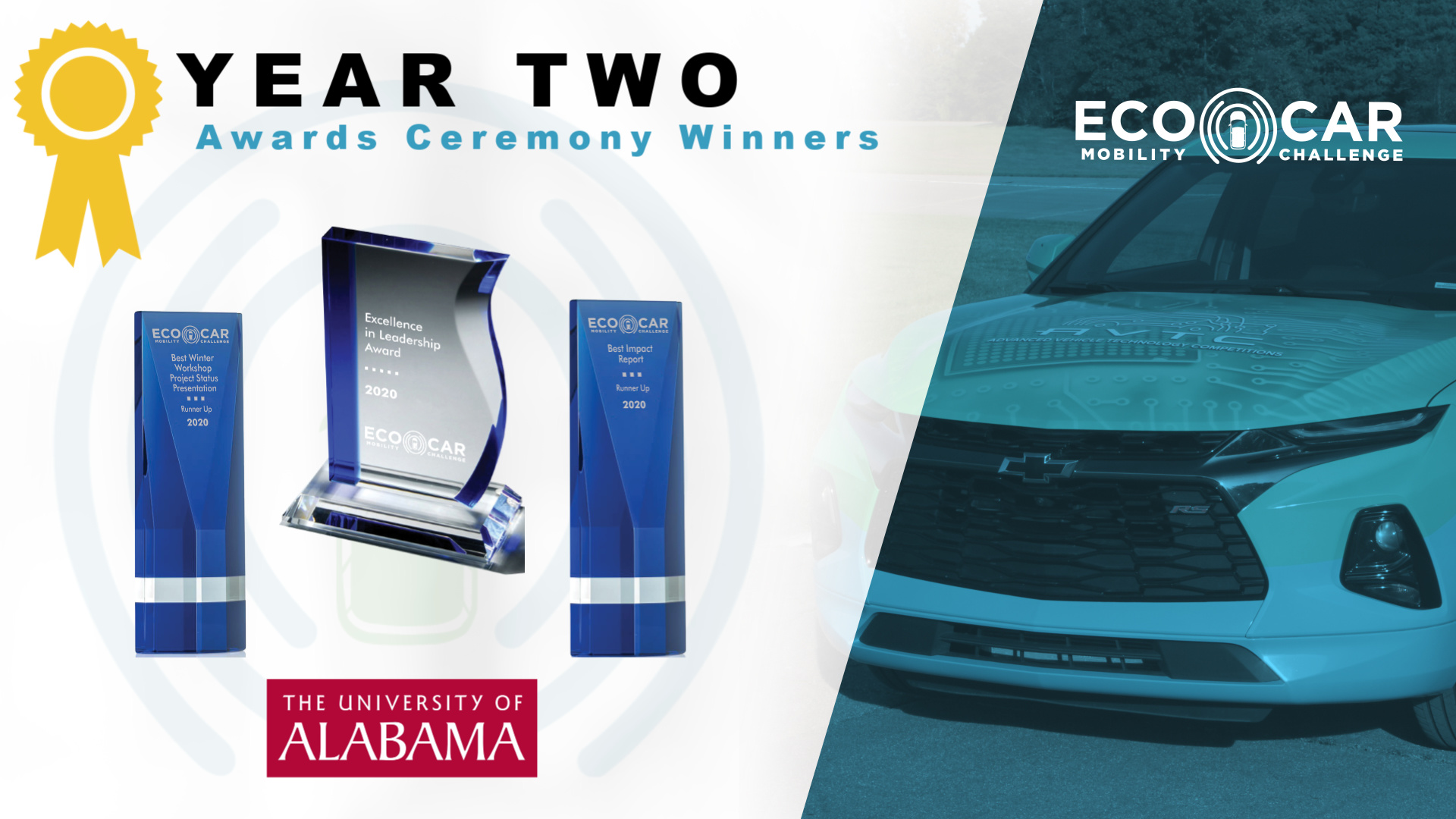
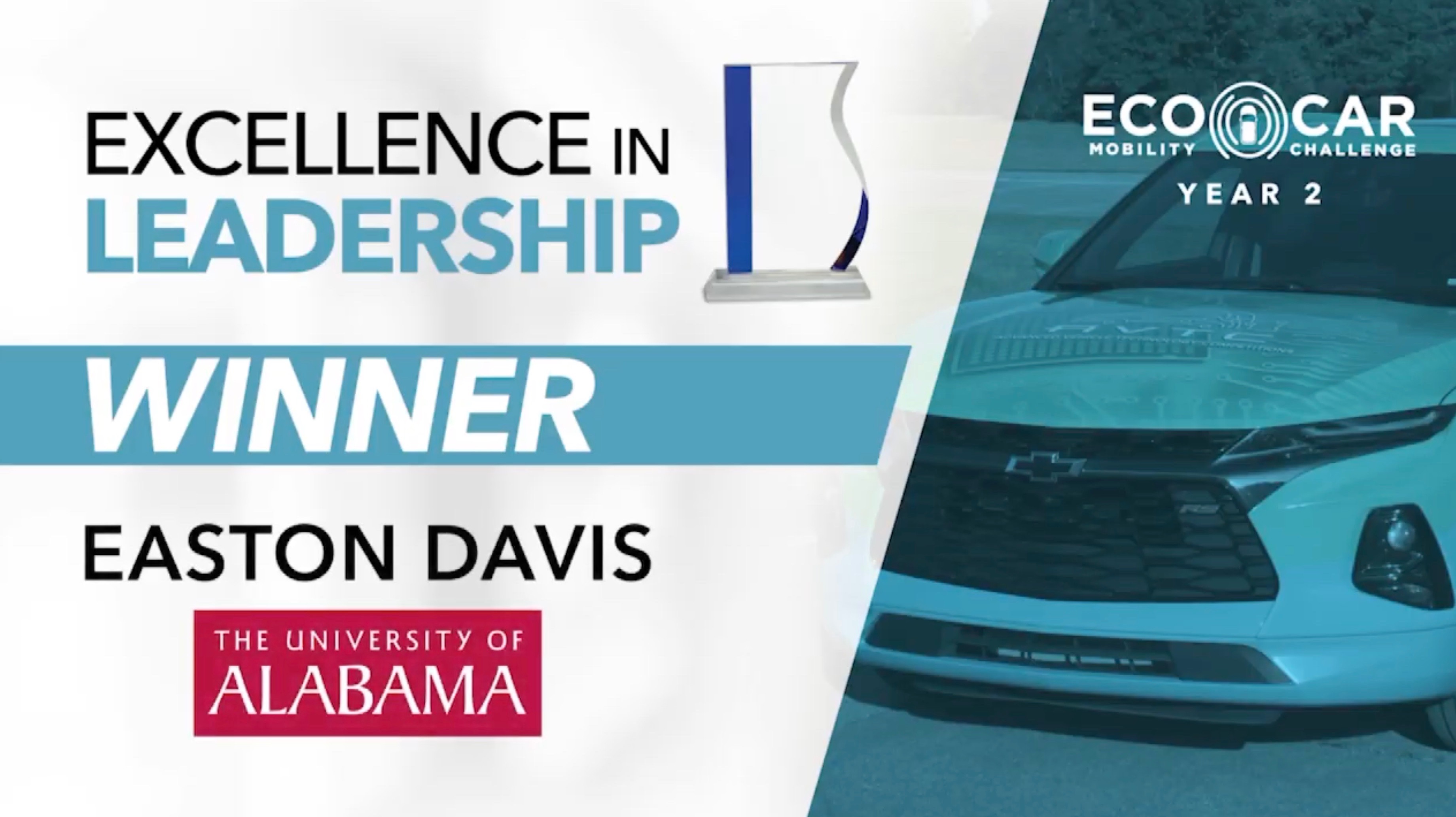
I am extremely grateful for all that I learned during my time as the project manager at UA’s EcoCAR team. I learned what it takes to lead a large team, and I also developed great friendships along the way. While my time at EcoCAR may be over, I look forward to seeing what UA will do in Year 3 and Year 4!